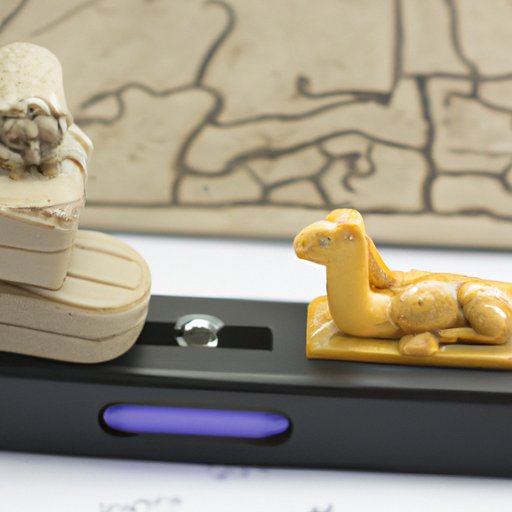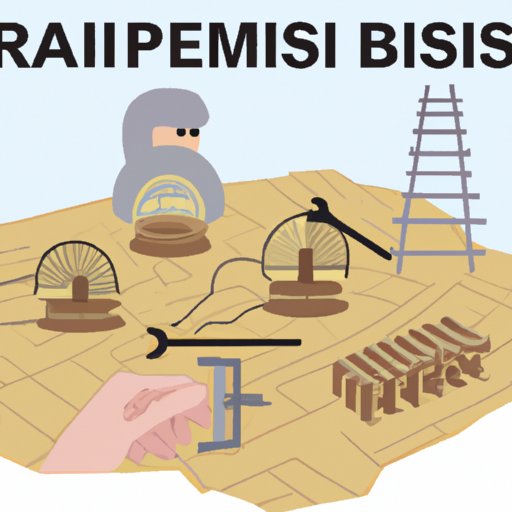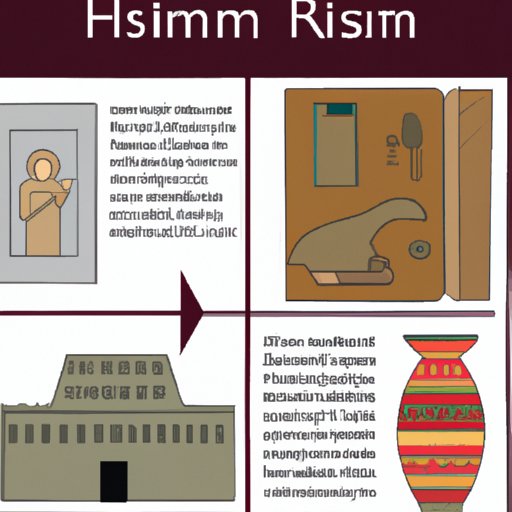Introduction
Mesopotamia is an area in the Middle East that is known for its long history of human development and innovation. It is widely considered to be the birthplace of civilization, and it is home to some of the earliest known inventions in human history. From early technologies such as the wheel to more complex scientific discoveries, the Mesopotamians have left a lasting legacy on the world today. But what exactly did the Mesopotamians invent? This article will explore the key inventions of the Mesopotamian civilization, as well as their impact on modern life.
Historical Overview of Mesopotamian Inventions
The Mesopotamians were a highly advanced civilization that flourished between 4500 BCE and 539 BCE. They developed many key technologies that would lay the foundation for future civilizations, including the wheel, the sailboat, bronze tools, writing, mathematics, and astronomy.
The invention of the wheel was particularly influential in the development of Mesopotamian society. According to Professor David Wengrow of University College London, “The wheel was used to make pottery and transport goods, but it also gave rise to the chariot, which was used in battle and for religious ceremonies.” The wheel was a major advancement in transportation technology, allowing for the movement of people and goods over greater distances.
The invention of writing was another key development of the Mesopotamian civilization. Writing allowed for the recording and sharing of information, which was essential for the growth of government and trade. The Sumerian writing system, cuneiform, was one of the earliest known written languages and is still studied today.
In addition to technological advances, the Mesopotamians also made important contributions to science. They developed a number of mathematical concepts, including the use of fractions and the sexagesimal system (a numerical system based on the number 60). They also made significant progress in astronomy, developing theories about the solar system and the movements of the planets.

Examining the Impact of Mesopotamian Inventions on Modern Life
While many of the Mesopotamian inventions are no longer used today, they had a profound impact on modern life. The wheel, for example, is still an integral part of transportation and has been adapted for use in cars, trains, and airplanes. Similarly, the sailboat, while no longer used as a means of transportation, has been adapted for recreational use.
Writing is perhaps the most far-reaching invention of the Mesopotamians, as it is still used in the modern world. Cuneiform was the first written language and paved the way for other written languages, such as Greek, Latin, and English. Today, writing is used for communication, record keeping, and storytelling, and is essential for the functioning of modern societies.
The Mesopotamian inventions in mathematics and astronomy also had a lasting impact on modern life. Their understanding of fractions has been essential for calculating currency, measurements, and formulas. Their theories about the solar system laid the groundwork for modern astronomy, which has enabled us to explore space and study the universe.

Investigating the Science Behind Mesopotamian Inventions
The Mesopotamians were highly skilled scientists and engineers who developed a range of innovative technologies. In order to understand the science behind their inventions, it is important to look at the methods they used to develop them.
The Mesopotamians used trial and error to test out different ideas and find solutions to problems. They also employed careful observation and experimentation to develop new technologies. For example, they studied the stars in the night sky and developed theories about the movements of the planets.
The Mesopotamians also used mathematics to solve problems and develop new technologies. They developed a number of mathematical concepts, such as the sexagesimal system and the use of fractions. These concepts were essential for understanding the complexities of the natural world and developing new technologies.

Exploring the Social and Cultural Implications of Mesopotamian Inventions
The inventions of the Mesopotamians had a significant impact on social and cultural life in the region. They changed the way people interacted with each other and their environment, and had implications for gender roles and power dynamics.
The wheel, for example, changed the lives of people by making transportation easier and faster. This allowed for increased trade and commerce, which led to the growth of cities and the emergence of social classes. It also enabled people to travel further distances, leading to the spread of ideas and cultures.
The invention of writing had an even greater impact on social and cultural life in Mesopotamia. Writing allowed for the sharing of information, which enabled governments to form and laws to be codified. It also allowed for the preservation of stories, myths, and religious texts, which shaped the beliefs and values of the Mesopotamian people.
A Comparison of Ancient and Modern Inventions in Mesopotamia
Although many of the inventions of the Mesopotamians are still used today, there have been significant changes in the technologies developed since then. One of the biggest changes has been the development of machines and automated processes. For example, the wheel has been adapted for use in cars, trains, and airplanes, and the sailboat has been replaced by motorboats.
In addition to mechanical advances, there have been major developments in the fields of science and medicine. The Mesopotamians developed a number of mathematical concepts, but modern mathematics has progressed significantly since then. Similarly, advances in medical science have enabled us to treat diseases and extend lifespans.
The Legacy of Mesopotamian Inventions on the World Today
The inventions of the Mesopotamians have had a lasting impact on the world today. They laid the foundations for modern technologies and scientific discoveries, enabling us to explore the universe and develop new technologies.
The wheel, for example, is still an integral part of transportation and has been adapted for use in cars, trains, and airplanes. Similarly, the sailboat, while no longer used as a means of transportation, has been adapted for recreational use. Writing is still used for communication, record keeping, and storytelling, and is essential for the functioning of modern societies.
The Mesopotamian inventions in mathematics and astronomy also had a lasting impact on modern life. Their understanding of fractions has been essential for calculating currency, measurements, and formulas. Their theories about the solar system laid the groundwork for modern astronomy, which has enabled us to explore space and study the universe.
Conclusion
The Mesopotamians were a highly advanced civilization that developed a range of innovative technologies. From the wheel to writing, the inventions of the Mesopotamians have had a lasting impact on modern life. They laid the foundation for future civilizations, enabling us to explore the universe and develop new technologies. The legacy of the Mesopotamians is still evident today, and their inventions continue to shape our world.
(Note: Is this article not meeting your expectations? Do you have knowledge or insights to share? Unlock new opportunities and expand your reach by joining our authors team. Click Registration to join us and share your expertise with our readers.)
